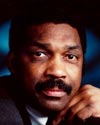
Population Communications International (PCI) has a very intriguing tagline: "Telling Stories, Saving Lives."
PCI, an American non-profit based in New York City, takes on the biggest, hairiest, most intractable problems. These are the issues that are so huge that should really be added to the original Four Horsemen of the Apocalypse: HIV/AIDS, women's rights, population control, environmental degradation and global sustainability.
The main weapon in their arsenal is perhaps the most powerful social force in the world today, second only to religion and Hip Hop... the soap opera.
PCI has worked in over twenty-five countries worldwide since 1985, and together with local partners has produced eighteen soap operas in fourteen countries. PCI consultants work directly with writers and social workers in local markets such as the Andean highlands, Kenya, Central America, and China. According to PCI's website, their programs "address the societal factors that limit people's ability to make choices that will improve their health and educational prospects."
These serial dramas motivate individuals to adopt new attitudes and behavior by modeling behaviors that promote family health, stable communities, and a sustainable environment. Each series is written, performed and produced by the creative talent in that country. The media stretches across tv, radio and print.
Mónica en busca de amor
(Monica in Search of Love)
For more, check out the On the Media story, "The Soapbox":This Spanish-language comic book, by Population Control International, provides Latino teens in the Los Angeles area with information about some common risks that adolescents face, including dating violence, early pregnancy, and STDs. Published in collaboration with a group of Latino teenagers and Gregory Molina, an educator in the Los Angeles Unified School District, the comic reflects life for Spanish-speaking youth in some of the city's most difficult neighborhoods. It has been distributed extensively in Southern California by health and social agencies. more>
In the late 1970s, Mexican telenovela writer Miguel Sabido invented the “soap opera for social change.” Since then, awareness organizations around the world have used Sabido-style soap operas to broadcast their message to millions of viewers. Brooke speaks with New Yorker contributor Hanna Rosin, who recently wrote about consciousness-raising through TV-storytelling.
> Listen to podcast or read transcript


 David Bornstein -
David Bornstein -  Alex Lindsay
Alex Lindsay  Zach Warren
Zach Warren  Bill Strickland -
Bill Strickland - 













